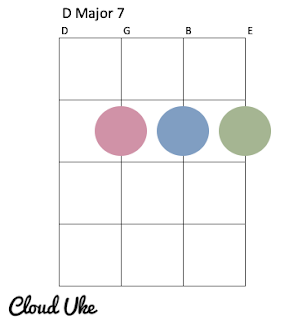Learning New Chords
This week I started a new segment to encourage people to develop their ability to play more complex chords on the baritone ukulele. Here's a few tips to how these can be done:
 Finger placement
Finger placement
The first step to learning chords is to work out the how to position your fingers on the fret board. Using chord diagrams, work out the most comfortable placement and then play every string individually to make sure each note is clear.On and off
The next step is to practice removing your fingers from the fret board and then finding the positing for the chord again. Each time it is important to check that each note is clear. I believe it's more important to have a good quality sound than it is to be fast at changing chords.One chord transition
Once you're happy with finding the chord on the fret board, practice changing from one chord to the chord you are learning. Maybe start with something simple like a G chord (C using standard ukulele tuning) and then move onto a chord that uses a few more fingers, which as a D (G for standard tuning).
Add to chord progression
Now it's time to add the chord to a chord progression. In my weekly Baritone Chord Focus posts, I aim to provide a suitable chord progression to practice. Remember it's always more important to get a good quality sounding chord than to be able to change fast. Slow it down until you're happy with the quality of your chord.
Once you learn a handful of complex chords, learning more gets easier because some take on similar shapes - please don't avoid learning them.


Comments
Post a Comment